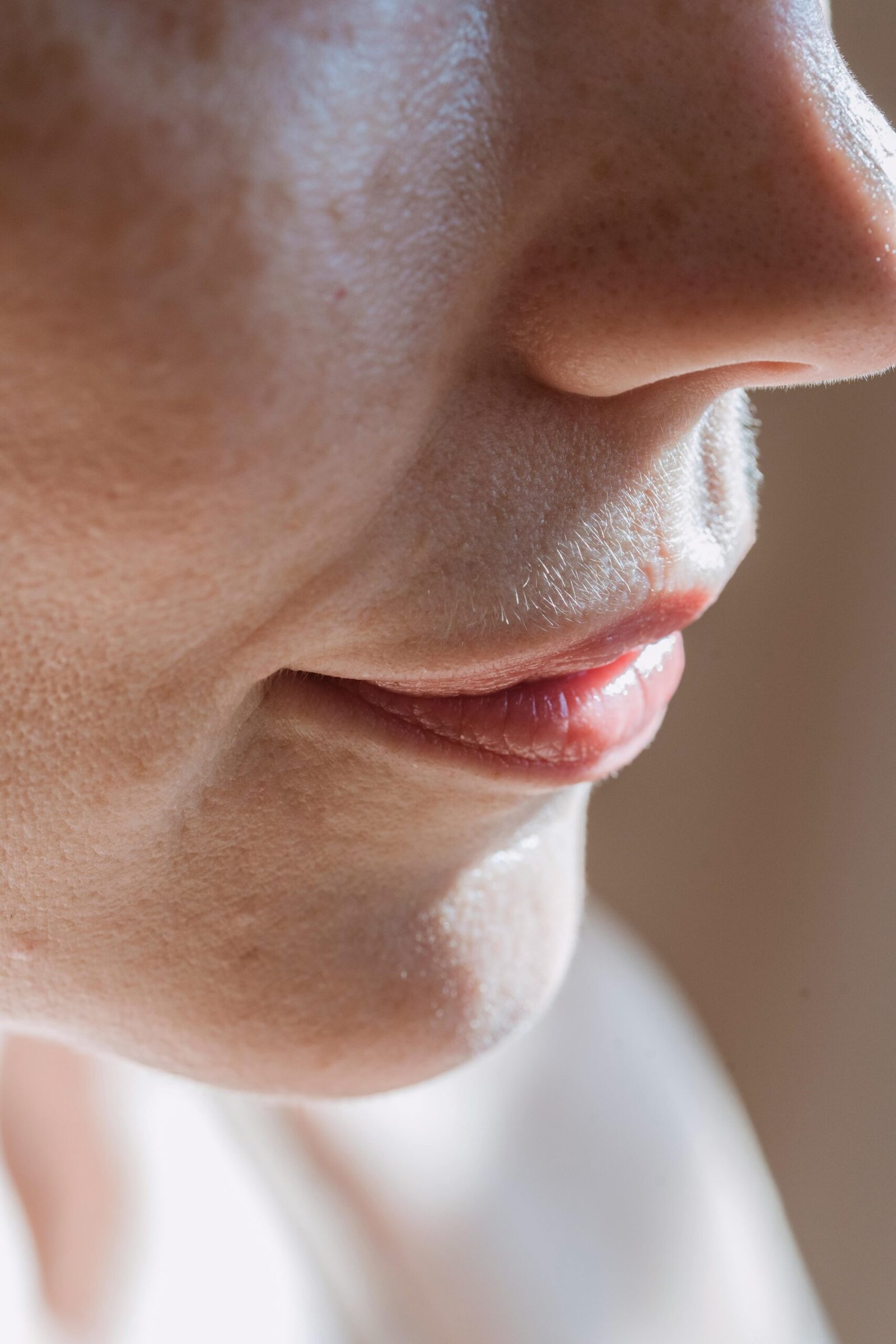What Is My Skin Type?
(5 Primary Skin Types)
A skin type refers to the natural qualities that define your skin. 5 Primary
Skin Types refer to oily, dry, combination, sensitive, and normal. Along with
oil production, moisture level, sensitivity, and texture, how it reacts and
behaves to various factors, such as skin care products and hormonal changes,
genetics, age, and environment influence skin type, which generally falls into
categories like oily, dry, combination, sensitive, or normal as younger people
are more likely to have normal skin compared to older people.
These 5 Primary Skin Types typically include how much natural oil (sebum) your skin produces,
its water intake, its sensitivity towards environmental influences, and skin care products.
Understanding your skin type helps you choose effective skincare.
5 Common Skin Types
1. Oil Skin
5 Primary Skin Types include one of the oily skin that produces excess sebum, leading
to a shiny appearance and enlarged pores. Oil production may gradually
decrease through aging, but hormonal changes can still cause flare-ups. While natural oils cover fine lines,
oily skin requires balanced care to avoid obstructed pores and maintain a healthy, glowing
complexion.
2. Dry Skin

Dry skin usually lacks moisture and natural oils, main to a rough texture, flaking, and
fine lines. This skin type is vulnerable to irritation, especially in cold or dry climates.
External factors like low air humidity, hot water, or weather generally cause skin
Over time, dry skin may become more delicate and needs daily hydration with suitable
moisturizers to maintain elasticity and a soft, healthy look.
3. Combination Skin
Combine skin characteristics in oily and dry areas, commonly with an
oily T-zone (forehead, nose, chin) and dried cheeks. This dual nature needs targeted
care to balance hydration and oil control. Aging can impact these zones differently, so
gentle, non-reactive products suitable to each area help maintain healthy and a smooth,
even complexion.
4. Sensitive Skin
5 Primary Skin Types refer to sensitive skin that easily responds to redness,
itching, burning, and irritation and is easily annoyed by environmental pollutants,
skincare products, or allergens. It commonly feels tight, itchy, or inflamed after exposure.
By age, sensitivity may increase, requiring extra care with soft, fragrance-free, skin-safe products
to maintain its protective barrier and lessen discomfort and flare-ups.
5. Normal Skin
Normal skin is well-balanced with not only oil but also moisture level, with a smooth
texture, minimal pores, and a healthy-looking complexion. Normal skin is the least
concerning reactivity Moreover, even normal skin can undergo rare dryness or
oiliness, compared to all types of skin normal skin has the least complications,
so maintaining it requires mild cleansing and stable hydration for lasting radiance.
Can Skin Type Change Over Time?
Yes, skin type can change eventually due to factors like age, hormones, lifestyle, and
environment. For illustrate, oily skin typically produces less sebum with age, becoming
drier. Hormonal fluctuations during puberty, pregnancy, or menopause also make skin
oilier, drier, or more sensitive.
Climate changes, like shifting to a humid or dry region, can damage skin moisture levels
and may be shifting it from normal to dry or oily. Additionally, lifestyle habits, such as
healthy diet, stress, and skincare habits, play a role. Noticing these changes can help
skincare to meet evolving needs, managing balanced, healthy skin at any age.
Care Instructions For Every Skin Type
Suitable skin care is essential for protecting a healthy-looking
and glowing complexion, no matter what your skin type.
Here’s how to care for different skin types smoothly
Skin Care for Oil Skin
1. Caring for oily skin includes balancing oil production free from over-drying,
don’t pick, pop, or squeeze pimples they will take a longer time to heal
2. Start with a soft, foaming cleanser to eliminate excess oil and shrink clogged pores.
3. Select lightweight, oil-free moisturizers to hydrate without including shine.
4. Scrub weekly to keep pores clear off, and choose products with salicylic acid to help control oil.
5. Lastly, use an Oil-absorbing sunscreen daily, as sun protection is necessary for all skin types,
even for oily skin.
Skin Care For Dry Skin
1. Dry skin requires consistent hydration to fight tightness and flakiness.
2. Choose a creamy, hydrating cleanser that won’t clear natural oils, followed
by a rich, softener moisturizer to lock in moisture.
3. Moisture-binding agents are superior ingredients to attract and retain water in the skin.
4. Avert hot water during cleansing, as it can cause dryness.
5. Lastly, apply a light, hydrating sunscreen daily to preserve and maintain moisture whole the day.
Skin Care For Combination Skin
1. Managing for combination skin needs balancing the oily and dry areas.
2. Use a soft cleanser that won’t strip moisture but capably removes
excess oil, focusing on the T-zone.
3. Apply a lightweight, acne-safe moisturizer to hydrate without clogging pores,
and consider using hydrating creams on dry areas if needed.
4. Cleanse weekly to keep pores clear, but stop over-exfoliating, as it can
agitate (irritate) dry spots.
5. Lastly, pick an extensive sunscreen suited for combination skin to maintain
without adding extra shine.
Skin Care For Sensitive Skin
1. Better to test new products before applying them on sensitive skin to prevent any cause
and use a minimalist skincare approach to avoid irritation.
2. Start with a light, fragrance-free cleanser to clear impurities without disturbing
the skin barrier.
3. Use a hydrating, safe-for-skin moisturizer with soothing ingredients like
aloe vera or ceramides to calm inflammation.
4. Stay away from harsh scrubs instead, opt for the occasional use of mild, non-allergenic
if necessary.
5. Lastly, perpetually apply a mineral-based sunscreen, as it’s rare less irritating for sensitive
skin, and provides the necessary protection from environmental pollutants.
Skin Care For Normal Skin
1. Caring for normal skin involves maintaining hydrated skin without using any treatments.
2. Use a gentle cleanser to clear away dirt and makeup without empty natural oils.
3. Follow up with a lightweight moisturizer to keep the skin hydrated and supple,
make sure, it doesn’t feel greasy.
4. Cleanse regularly, about once or twice a week, to detach dead skin cells and improve
a fresh complexion.
5. Lastly, don’t forget to apply a wide range of sunscreen daily to protect against
UV damage and maintain your skin’s health over time.
How to Find Your Skin Type
To know about our skin type :

1. Wash the face with a mild cleanser
2. Clean the face with a smooth towel
3. Notice how the skin looks and feels immediately after your face wash
4. Observe and note the point of how this changes for the next hours
5 Primary Skin Types:
1. Dry skin will feel dry or tight soon after washing it may also look dry, rough, or flaky.
2. Oily skin may look matt next washing but will become shiny or greasy for the next few
the oil will be noticeable if someone marks their nose with a tissue.
3. Combination skin typically consists of an oily T-zone and normal or dry cheeks the T-zone
includes the forehead, nose, and chin after some time this area will look shiny or greasy but
cheeks will not.
4. Normal skin will look neat, and balanced in tone and texture, and not feel tight or irritated
after washing. It will not alter much during the day.
5. Sensitive skin gets pain, burn, or itch after a wash.
Skin Care Routine
Here is a basic daily skincare routine suitable for all skin types:

1. Use a mild cleanser twice daily to effectively remove dirt, oil, and impurities without
the skin’s natural barrier’s interference.
2. Cleanse 1-2 times a week to eliminate the dead skin cells and open up the pores; a
mild exfoliant that is suitable for your skin type can be chosen.
3. Apply toner on the face to balance the skin’s pH, hydration
4. Serums with main ingredients such as nonallergic for hydration or vitamin C for
brightness to deal with the specific ones, respectively, can be applied for skin problems.
5. To protect from hydration use moisturizer daily by using a formula that is suitable to your skin type (lightweight for oily, richer for dry).
6. Every morning apply a broad-spectrum SPF 30+ sunscreen, even on foggy days, to protect against UV damage.
7. Apply the night cream to hydrate and protect the sensitive skin around the eyes.
8. Before going to bed remember to keep nourishing moisturizer or night cream to help skin repair overnight.
9. Intake of adequate water improves skin hydration from within and promotes overall healthy skin
10. Follow daily routine consistently, as regular care is necessary for long-term results and healthy skin maintenance.
If people have specific concerns they may take extra steps to care for their skin
and consult a dermatologist for further guidance
Conclusion
To Conclude, Knowing your skin type is the root of an Effective skincare
routine. Suppose you have oily, dry, combination, sensitive, or normal skin,
adjusting your products and habits to suit your skin’s special needs can promote
healthier, neat skin and improve its natural glow. Accept your skin’s individuality!
https://absoluteinformation.com/teenage-acne-prevention/#more-7231

